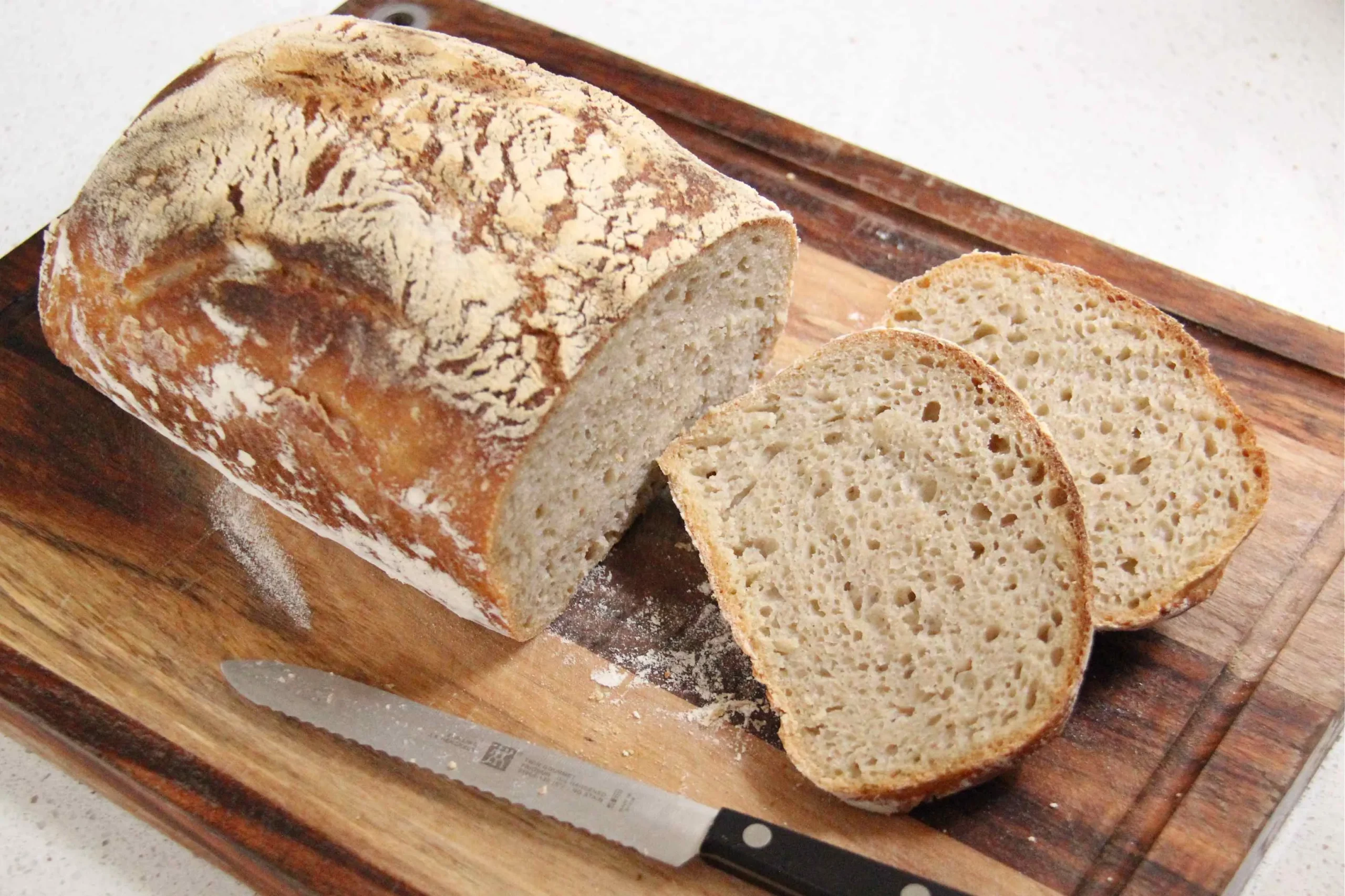Imagine pulling a golden, crusty loaf of bread from your oven that looks like it's straight from a Parisian bakery - with a crackling crust, soft interior, and that irresistible sourdough aroma that makes your entire kitchen come alive! This traditional French bread recipe, Pain Tradition Levain Liquide, is not just a recipe, it's a culinary journey that transforms simple ingredients into a masterpiece of artisan baking. Whether you're a seasoned baker or a curious home cook, this recipe will transport you to the heart of French bread-making tradition.
Prep Time: 30 mins
Cook Time: 40 mins
Total Time: 1 hrs 10 mins
Cuisine: French
Serves: 1 loaf
Ingredients
- 500g bread flour
- 350g water
- 100g liquid levain
- 10g salt
Instructions
- In a large mixing bowl, combine 500g of bread flour and 10g of salt. Mix the dry ingredients together until they are well combined.
- In a separate bowl, mix 350g of water with 100g of liquid levain. Stir until the levain is fully dissolved in the water.
- Gradually pour the levain-water mixture into the bowl with the flour and salt. Use a wooden spoon or your hands to combine the ingredients until a shaggy dough forms.
- Once the dough comes together, transfer it to a clean, lightly floured surface. Knead the dough for about 10-15 minutes until it becomes smooth and elastic. If the dough is too sticky, sprinkle a little more flour as needed.
- Shape the kneaded dough into a ball and place it in a lightly oiled bowl. Cover the bowl with a damp cloth or plastic wrap to prevent it from drying out.
- Let the dough rest at room temperature for about 1 hour, or until it has doubled in size. This is the bulk fermentation stage.
- After the dough has risen, gently deflate it by pressing down on it with your hands. Turn it out onto a lightly floured surface.
- Shape the dough into a round loaf by folding the edges towards the center and then flipping it over so the seam is on the bottom. Let it rest for about 20 minutes, covered with a cloth.
- After resting, shape the loaf again by tightening the surface tension. Place the shaped loaf seam-side up in a well-floured proofing basket or bowl lined with a floured cloth.
- Cover the loaf with a cloth and let it proof at room temperature for another 30 minutes, or until it has puffed up slightly.
- While the loaf is proofing, preheat your oven to 230°C (450°F). Place a Dutch oven or baking stone inside to heat up as well.
- Once the oven is hot and the loaf has proofed, carefully turn the loaf out onto a piece of parchment paper. Score the top with a sharp knife or blade to allow for expansion during baking.
- Using oven mitts, carefully remove the hot Dutch oven from the oven. Lift the parchment paper with the loaf and place it inside the Dutch oven. Cover with the lid.
- Bake the loaf covered for 30 minutes, then remove the lid and bake for an additional 10-15 minutes until the crust is golden brown and the loaf sounds hollow when tapped on the bottom.
- Once baked, remove the loaf from the Dutch oven and let it cool on a wire rack for at least 30 minutes before slicing. This allows the crumb to set properly.
Tips
- Temperature Matters: Ensure your liquid levain and water are at room temperature for optimal fermentation.
- Patience is Key: Don't rush the fermentation and proofing stages - they're crucial for developing flavor and texture.
- Invest in a Good Proofing Basket: A well-floured banneton helps create that beautiful professional shape.
- Use a Dutch Oven: This creates steam and helps develop a crispy, golden crust.
- Let the Bread Rest: Always allow your bread to cool completely before cutting to let the crumb set properly.
- Practice Makes Perfect: Don't get discouraged if your first loaf isn't perfect - bread baking is an art that improves with experience.
- Experiment with Flour: Try different bread flour types to find your perfect texture and flavor profile.
Nutrition Facts
Calories: 1200kcal
Carbohydrates: 240g
Protein: 36g
Fat: 3g
Saturated Fat: g
Cholesterol: 0mg


